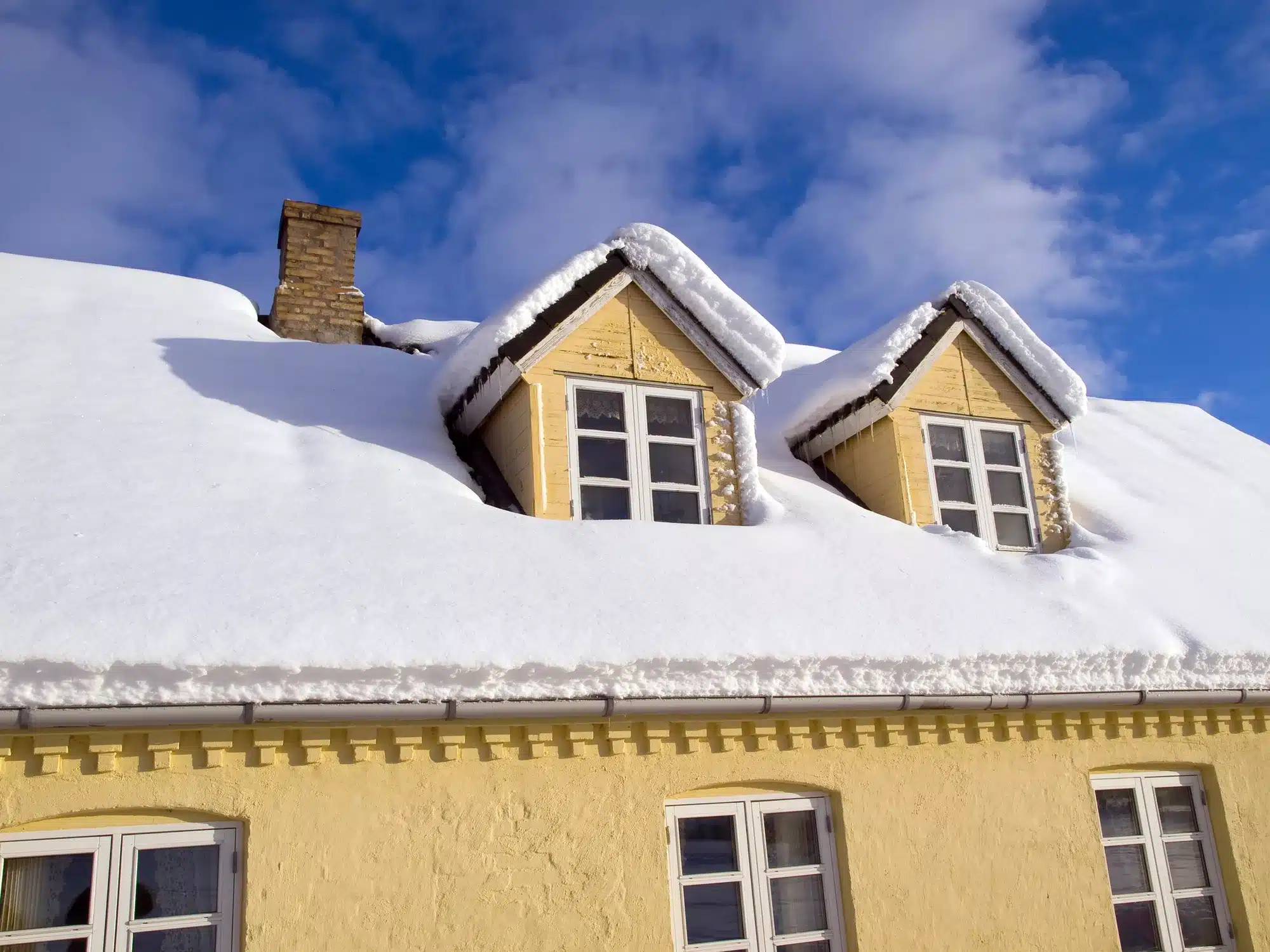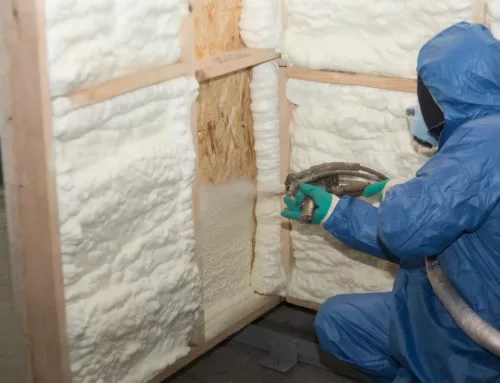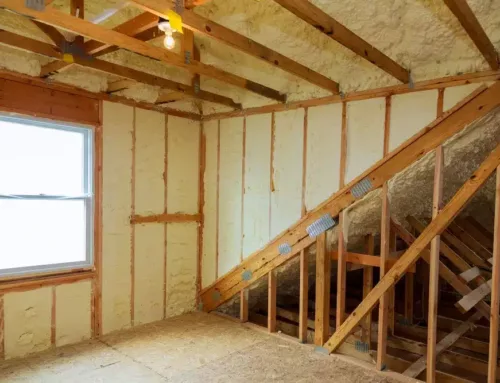When your home starts to feel more like a fridge, it’s time to talk about home insulation for cold weather. It’s not merely about basking in warmth; it equally involves diminishing the steep climb of your heating expenses. Diving deeper, you’ll grasp the mechanisms behind various insulation substances’ effectiveness in frosty environments and comprehend the pivotal role attic insulation plays in retaining heat within your home.
We’ll also dive into tackling air leaks that let cold drafts sneak in, turning what should be your warm refuge into an icebox. Plus, we get into the nitty-gritty of crawl space strategies that could save you from losing heat through the floorboards. And because we care not just about warmth but also about our planet, eco-friendly options are on the table too.
Understanding the Importance of Home Insulation in Cold Weather
When winter rolls around, staying warm becomes a top priority for homeowners. But did you know that about 90% of homes in the United States are under-insulated? The lack of sufficient insulation not only challenges the quest for a warm abode but also escalates the cost of heating.
To fight off the cold effectively and efficiently, proper insulation is key. It acts like a snug blanket for your house, slowing down the escape of heat so you can maintain a comfortable indoor temperature without overworking your furnace. And let’s be real—who doesn’t want to save some cash on energy costs?
Especially in cold climates, selecting the optimal insulation can significantly enhance your comfort and energy efficiency. While fiberglass batts provide conventional coverage between wall studs, spray foam insulation excels in sealing off inaccessible areas, ensuring superior protection against frigid drafts and extreme temperature drops.
The Role of Insulation in Energy Conservation
Think about insulation as your home’s superhero cape against high energy bills during cold periods. Well-positioned insulation acts as a guardian, ensuring that the warmth remains indoors, thus minimizing our reliance on perpetual heating. That means more money stays in your pocket—money better spent on hot cocoa supplies.
Beyond just personal savings though, using less energy contributes to overall environmental health by reducing our carbon footprint—a win-win situation if there ever was one. Plus with advancements from manufacturers association-approved products offering higher R-values (a measure of resistance to heat flow), modern insulations are now even more effective at trapping warmth while boosting indoor air quality too.
Key Takeaway:
Wrapping your home in the right insulation is like giving it a warm hug, slashing heating bills and fighting off cold drafts. It’s not just about staying cozy; it’s also about saving money and helping the planet by cutting down on energy use.
The Best Insulation Material for Cold Weather
Spray Foam Fights Cold Weather Like None Other
When confronting cold climates head-on, nothing quite matches the efficacy of spray foam insulation. Its distinct characteristics and application methodology elevate it above other insulation materials, making it the top contender for keeping interiors warm and cozy amidst freezing temperatures.
First and foremost, spray foam insulation’s rapid expansion upon application ensures unparalleled coverage, penetrating every crevice and gap in the building envelope. This meticulous sealing process effectively blocks out any potential points of air infiltration, thwarting cold drafts from permeating into the living space. Unlike traditional options such as fiberglass or cellulose, spray foam creates a seamless barrier that fortifies against the harshest of winter chills.
Moreover, spray foam insulation boasts an impressive R-value, indicating its exceptional thermal resistance. This translates to superior insulation capabilities, maintaining stable indoor temperatures even as the mercury plummets outside. Furthermore, its inherent moisture resistance proves invaluable in cold climates prone to condensation and frost. By forming a robust barrier against moisture intrusion, spray foam insulation safeguards against issues like mold growth and structural deterioration, ensuring the durability and longevity of the property.
In essence, spray foam insulation emerges as the ultimate solution for combating the cold. With its unmatched coverage, thermal performance, and moisture resistance, it not only enhances comfort but also delivers long-term energy savings. In the realm of cold weather insulation, spray foam reigns supreme, offering an unbeatable combination of efficacy and efficiency.
Click to Tweet
Attic Insulation Tips for Cold Climates
As the temperature plummets outside, ensuring your attic is properly insulated becomes paramount for maintaining warmth and curbing heating expenses. In cold climates, the attic serves as a crucial battleground against the elements, and with the right insulation strategy, it can become your home’s ultimate defender against the cold.
One key tip for maximizing attic insulation in cold climates is to prioritize the insulation material itself. Opting for high-quality insulation materials with a high R-value is essential for achieving optimal thermal resistance. Fiberglass, cellulose, and spray foam insulation are popular choices, each offering unique benefits depending on your specific needs and budget. Spray foam insulation, for instance, provides unmatched coverage and sealing capabilities, ideal for effectively blocking out cold drafts and ensuring comprehensive insulation throughout the attic space.
Furthermore, paying attention to insulation depth and coverage is vital for maximizing energy efficiency and comfort in cold climates. Adding extra insulation layers or increasing the depth of existing insulation can significantly enhance thermal performance, minimizing heat loss and reducing the workload on your heating system. Aim for uniform insulation coverage across the entire attic floor, ensuring no areas are left exposed to potential cold spots or drafts.
In addition to insulation materials and coverage, it’s crucial to address air sealing in the attic to prevent heat loss and infiltration of cold air. Sealing off gaps, cracks, and openings around attic vents, chimneys, plumbing penetrations, and electrical fixtures helps maintain a tight thermal envelope, effectively trapping warmth indoors and keeping the cold at bay.
By implementing these attic insulation tips tailored to cold climates, you can transform your attic into a powerful ally against winter’s chill. With a well-insulated attic, you’ll not only enjoy enhanced comfort and warmth but also reap the benefits of reduced heating costs and increased energy efficiency throughout the cold season.
Click to Tweet
Crawl Space Insulation Strategies for Cold Weather
When winter’s chill hits, your crawl space might be the last place on your mind. But trust me, insulating your crawl space is like giving your home a warm hug from below. Here’s why and how to keep that warmth in and cold out.
Floor Joists: The Unsung Heroes of Warm Floors
Insulating between floor joists in the crawl space can make walking around barefoot in winter a pleasure rather than a punishment. By thwarting the chilly air’s invasion into our rooms, it ensures our feet remain snug and warm. Plus, when you consider that most homes are sitting ducks for heat loss here, adding insulation makes more sense than wearing three pairs of socks.
The Long-Term Benefits of Properly Installed Home Insulation
Imagine sliding into a warm, cozy jacket on a chilly day. That’s what proper home insulation does for your house. Cloaking your home in a layer of warmth fends off the chill and concurrently cuts down on your heating expenses over the long haul.
Let’s break down why investing upfront in high-quality installation pays off big time:
- Reduced energy bills: A snugly insulated home needs less heat to stay warm, meaning lower monthly expenses for you.
- Increase comfort levels: No more layering sweaters indoors. Adequate insulation keeps warmth where it belongs—in every corner of your living space.
- Eco-friendly impact: Using less energy means fewer carbon emissions, making Mother Nature pretty happy with your choice too.
Focusing on areas prone to leaks like attics and crawl spaces can prevent cold drafts from sneaking in and cranking up those dreaded winter utility bills even further. Whether you’re eyeing fiberglass batts or considering an upgrade with spray foam, remember—the effectiveness depends largely on meticulous installation efforts that cover every nook and cranny without leaving gaps or small crevices exposed to outdoor temperature drops.
Click to Tweet
Conclusion
In conclusion, as winter’s icy grip tightens, ensuring your home is properly insulated becomes paramount for maintaining warmth, comfort, and energy efficiency. By following the tips outlined in this guide, from choosing the right insulation materials to optimizing attic insulation, you can transform your home into a cozy sanctuary even amidst the coldest of climates.
Don’t let the chill seep in – take proactive steps to fortify your home against the cold, and enjoy a snug and inviting living space all winter long. For expert insulation solutions tailored to the unique needs of your home, contact Kansas Spray Foam Insulation today and embark on the journey to a warmer, more energy-efficient home.




